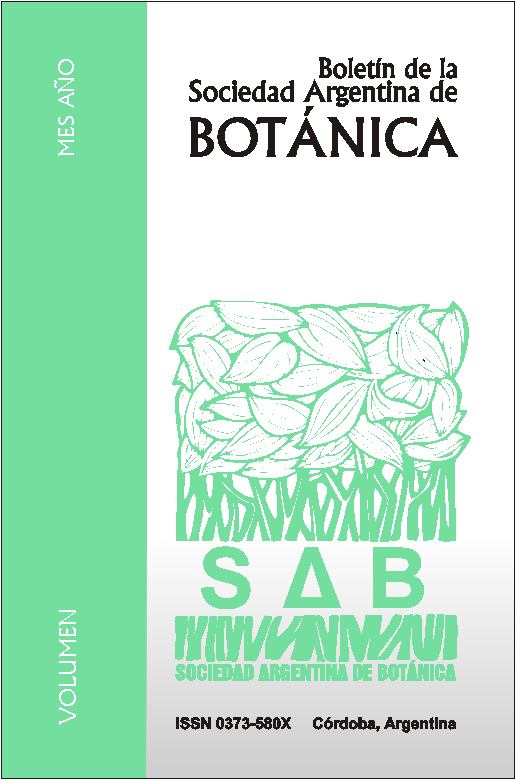Leaf architecture of native Lauraceae species from Misiones, Argentina.
DOI:
https://doi.org/10.31055/1851.2372.v51.n1.14368Keywords:
Venation, areoles, Atlantic Forest, stomata, domatia.Abstract
Leaf architecture of native Lauraceae species from Misiones, Argentina. The leaf architecture of 12 woody species of Lauraceae family that grows in Province of Misiones (Argentina) was studied with the aim of contributing to knowledge of them. The species are characterized by simple leaves, petioles, apex usually acuminate and with or without domatia. Venation patterns first, second, third, fourth and fifth order were described and illustrated for the species studied; these one presents the secondary venation from several types: brochidodromous (Nectandra megapotamica, Cryptocarya aschersoniana, Ocotea diospyrifolia, Endlicheria paniculata, Ocotea puberula and Ocotea sp.) acrodromous suprabasal imperfect -brochidrodromous (Cinnamomum amoenum, Ocotea pulchella), craspedodromous (Ocotea acutifolia) and eucamtodromous-brochidodromous (Nectandra lanceolata, Nectandra angustifolia, Ocotea lancifolia). Areoles density was observed as an important diagnostic character; not being the case on the number of sides they have. All species showed paracytic stomata. The characters analyzed, together with morphologic and epidermal, allowed differentiation of the 12 tested species, demonstrating the importance of leaf architecture in vegetative state recognition. First time for the Argentinian flora, Endlicheria paniculata is mentioned in this contribution.
Downloads
Published
Issue
Section
License
Provides immediate and free OPEN ACCESS to its content under the principle of making research freely available to the public, which fosters a greater exchange of global knowledge, allowing authors to maintain their copyright without restrictions.
Material published in Bol. Soc. Argent. Bot. is distributed under a Creative Commons Attribution-NonCommercial-ShareAlike 4.0 International license.





